Topics
Category
Era
Minneopa State Park
Minneopa State Park, located in southern Minnesota, is Minnesota’s third-oldest state park. It was created in 1905 to preserve Minneopa Falls, a two-tiered waterfall once described as nature’s masterpiece. The park has since expanded to include Minnesota River frontage, the historic Seppman stone windmill, and a herd of American plains bison.
The name Minneopa, a contraction of mni hinhe nunpa, is most commonly translated from the Dakota language as “water falling twice.” The park is situated in the Minnesota River Valley, which formed 12,000–9,000 years ago when glacial meltwater from Lake Agassiz drained south, creating the massive Glacial River Warren. This erosive force created a valley 320 miles long, up to five miles wide, and 250 feet deep. Also, beginning over 14,000 years ago, the erosion of limestone moved Minneopa Falls upstream about three-quarters of a mile. It’s still moving.
The first Euro-American settler-colonists began arriving in the area in 1853 by small steamboat and by wagon. Local newspapers and settler-colonists’ diaries describe a Dakota village, Makatosa, on the west bank of Minneopa Creek and just north of what became US Highway 68. Records tell of interactions with the Dakota leaders Sitomni Duta (Red All Over) and Wahpe Duta (Red Leaf).
Minneopa Falls, first owned by D. C. Evans, quickly became a popular local picnicking and gathering area. The first resort, called Minneinneopa, opened in 1858 just east of the falls. Prominent artists took photos; newspapers and immigration brochures promoted the area. In Euro-American literature from the 1860s and 1870s, the falls is referred to as Minne-inne-o-pa and interpreted as “singing waters where the elk play.”
In 1870, the St. Paul and Sioux City Railroad reached Minneopa Falls and scheduled several daily trips from nearby Mankato. Excursions from churches, schools, and businesses came for the day. Large camp meetings (Christian religious gatherings, with attendance as high as 5000) came for multiple days. The upper falls area was said to be a natural amphitheater.
In 1903, Orange Little, the newest owner of Minneopa Falls, spoke of wanting to cut the trees and graze cattle. Alarmed by this possibility, local business leaders formed a committee to preserve Minneopa Falls by designating it as a state park. In 1905, Ezra Gates, a Minnesota state representative, introduced a bill to create Minneopa State Park. Some dissenters thought it should be a locally owned park. But this was an era when the state government had already created other state parks and historical monuments, setting a precedent. The bill passed.
From 1905 to the early 1960s, Minneopa State Park grew minimally. Local commitment to the park remained strong, and the site maintained its popularity (45,000 visitors were reported in 1935, a year of heavy rains). Between 1937 and 1940, the WPA (Works Progress Administration; later, Works Projects Administration) built seven rustic-style structures that were later added to the National Register of Historic Places.
Also during this era, the state park administration began to rethink what a state park should be and whether the minimum size should be 500 acres. By 1967, Minneopa State Park had just over 145 acres. Should it expand or should it revert back to local control? Local sentiment supported expansion.
Expansion supporters formed the Mankato Active Community Thought (ACT) Minneopa Expansion Subcommittee. They mobilized around three facets: the Minnesota state legislature and Governor Harold LeVander; US Senator Walter Mondale and the Department of Interior; and a local “Expand the Park” fundraising campaign. By these actions, they added almost 800 acres to the park. It expanded to the Minnesota River and the state-owned historical site Seppman Mill.
In 2015, eleven American plains bison were reintroduced to the park. The bison are part of the Minnesota Bison Conservation Herd, which includes the Minnesota Zoo and Blue Mounds State Park. These herds are unique: they are considered genetically pure, largely free of genetic material that would have come from cross breeding with cattle. The bison reside on 332 acres of native prairie.
Minneopa State Park in 2017 consists of 2,599 acres. The southern, smaller section of the park includes Minneopa Falls and the WPA structures. The northern section borders the Minnesota River and includes the drive-through Bison Range, historic Seppman Mill, and camping facilities. Interpretive services include geocaching, birding, and naturalist programs.
Bibliography
“450-acres Expansion of Minneopa State Park Finalized.” Mankato Free Press, December 31, 1968.
“92,205 OK’d for Minneopa State Park.” Mankato Free Press, December 20, 1968.
Blue Earth County Historical Society. Hanging folders on Minneopa State Park, divided by decades. Mankato, MN.
“Expand the Park” scrapbook
Manuscript Collection, Blue Earth County Historical Society, Mankato
Description: Lloyd Vollmer, chairman of the ACT Minneopa expansion committee, kept a scrapbook of newspaper articles and other related papers from the 1967–1972 Expand the Park campaign. It includes yellow Expand the Park button artifacts.
Herbst, Gordon H. Minneinneopa: 150 Year History; Minneopa State Park. Waseca, MN: Quality Print, 2007.
Hughes, Thomas. History of Minneopa State Park. St. Paul: Minnesota Department of Conservation, Division of Forestry, 1932.
Journal of the House of the Thirty-fourth Session of the Legislature of the State of Minnesota. St. Paul: McGill-Warmer, State Printers, 1905.
Meyer, Roy W. Everyone’s Country Estate. A History of Minnesota’s State Parks. St. Paul: Minnesota Historical Society Press, 1991.
——— . “Forestville: The Making of a State Park.” Minnesota History 44, no. 3 (Fall 1974): 82–95. http://collections.mnhs.org/mnhistorymagazine/articles/44/v44i03p082-095.pdf
Minneopa State Park WPA/Rustic Style Historic Resources. Minneopa State Park. National Register of Historic Places Nomination File, State Historic Preservation Office, Minnesota Historical Society, St. Paul.
http://www.mnhs.org/preserve/nrhp/nomination/89001663.pdf
“Minneopa Visited by 45,000 in 1935.” Mankato Free Press, January 14, 1936.
Minnesota Department of Natural Resources. “Minneopa Falls: A Changing Cascade.” Interpretative Services, 2014.
Description: an interpretative sign at Minneopa Falls, Minneopa State Park.
Minnesota Department of Natural Resources. “Rare Bison Herd Released.” News release, September 25, 2015.
http://news.dnr.state.mn.us/2015/09/25/rare-bison-herd-released-into-minneopa-state-park/
Minnesota Department of Natural Resources. “Minnesota Bison Conservation Herd Reintroduction. Minneopa State Park.”
http://www.dnr.state.mn.us/state_parks/minneopa/bison.html
Minnesota State Board of Immigration. Minnesota, the Empire State of the New North-west: The Commercial, Manufacturing and Geographical Centre of the American Continent. St. Paul: H.M. Smyth & Company, Printers, 1878.
Seppman Mill. National Register of Historic Places Nomination File, State Historic Preservation Office, Minnesota Historical Society, St. Paul.
http://www.mnhs.org/preserve/nrhp/nomination/71000435.pdf
Tilden, Freeman. The State Parks Their Meaning in American Life. NY: Alfred P. Knopf, 1962.
https://archive.org/details/stateparkstheirm006470mbp
Related Resources
Primary
Leavenworth, Lucy, and Wilder Morris, eds. Old Rail Fence Corners. Frontier Tales Told by Minnesota Pioneers. St. Paul: Minnesota Historical Society, 1914. Reprint 1976.
Mankato Record
Description: Issues in September and October 1876 provide updates on the James-Younger gang escape route and sightings in the Minneopa and Mankato areas. Dates include September 16, 23, 26, and 30 as well as October 3, 7, and 10 (all 1876).
Powell, John Walker. “A Summer in the Big Woods. Boyhood Reminiscences.” Minnesota History 35, no. 2 (June 1956): 77–86.
http://collections.mnhs.org/mnhistorymagazine/articles/35/v35i02p077-086.pdf
Secondary
Hughes, Thomas. Illustrator, A. Anderson. Indian Chiefs of Southern Minnesota: Containing Sketches of the Prominent chieftains of the Dakota and Winnebago tribes from 1825 to 1865. Mankato, Minnesota: 1927.
Goodman, Nancy and Robert. Paddlewheels on the Upper Mississippi, 1823–1854: How Steamboats Promoted Commerce & Settlement in the West. Stillwater, MN: University of Minnesota Printing Services, 2003.
Niskanen, Chris. Prairie Lake Forest Minnesota's State Parks. St. Paul: Minnesota Historical Society Press, 2010.
Olensius, Richard. Minnesota Travel Companion. Wayzata, MN: Bluestem Productions, 1982.
Schrader, Julie Hiller. The Heritage of Blue Earth County. Dallas, TX: Curtis Media Corporation, 1990.
Swanson, Evadene Burris. “The Use and Conservation of Minnesota Wildlife 1850–1900.” PhD thesis, University of Minnesota, June 1940.
https://www.leg.state.mn.us/docs/2007/other/070554.pdf
Web
Minnesota Department of Natural Resources. Birds of Minneopa State Park Checklist.
http://files.dnr.state.mn.us/destinations/state_parks/minneopa/bird_checklist.pdf
Minnesota Department of Natural Resources. Minneopa State Park All Season Map.
http://files.dnr.state.mn.us/maps/state_parks/spk00235.pdf
Minnesota Department of Natural Resources. Minneopa State Park Snapshot Tour. http://www.dnr.state.mn.us/state_parks/virtual_tour/minneopa/dialup.html
Minnesota Department of Natural Resources. Minneopa State Park Virtual Tour. http://files.dnr.state.mn.us/destinations/state_parks/virtual_tours/minneopa/minneopa.html
Related Audio
Sounds of Minneopa State Park, April 2017
All rights reserved
Holding Location
Articles
Related Images
Negotiating the purchase of Minneopa State Park, October 13, 1905. Photograph by J.P Hodge, Depot Agent, on platform of Minneopa Depot, South Bend, Minnesota. Seated left to right: State Attorney General E. T. Young; State Auditor Samuel G. Iverson; Governor John A. Johnson; General James H. Baker; Orange Little; John C. Wise Jr. of Mankato Review. Standing left to right: Thomas Hughes of local committee; F. G. Cuttle of Railway Construction; Robert L. Williams, in front of Cuttle; Chairman of County Commissioners William. W. Paddock; Dr. J. W. Andrews of local committee; Joseph E. Reynolds of Mankato Free Press; William. L. Johnson, superintendent of Railway Construction Company of Winston Brothers; Charles. N. Andrews of local committee.
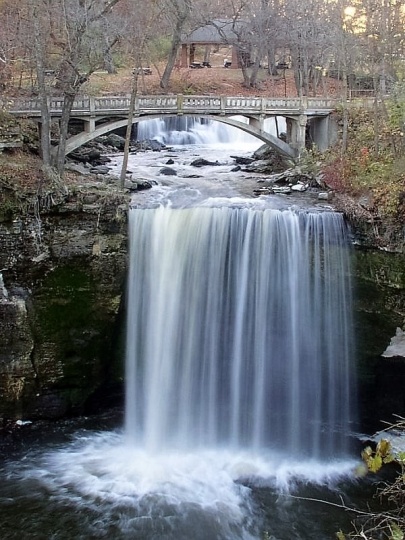
Minneopa Falls
Articles
More Information
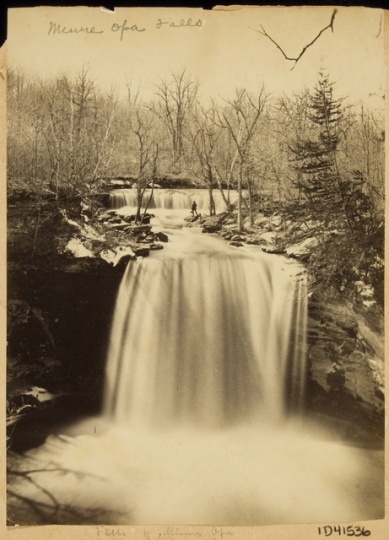
Falls at Minneopa
Public domain
Holding Location
Articles
More Information
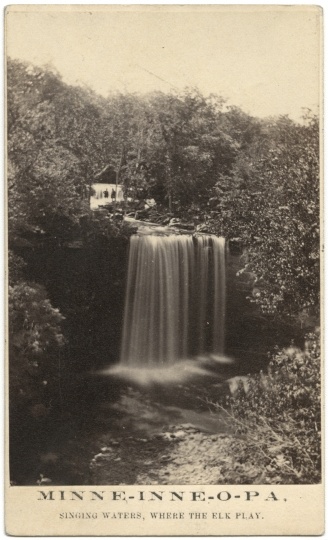
Minneopa Falls, Blue Earth County
Public domain
Holding Location
Articles
More Information
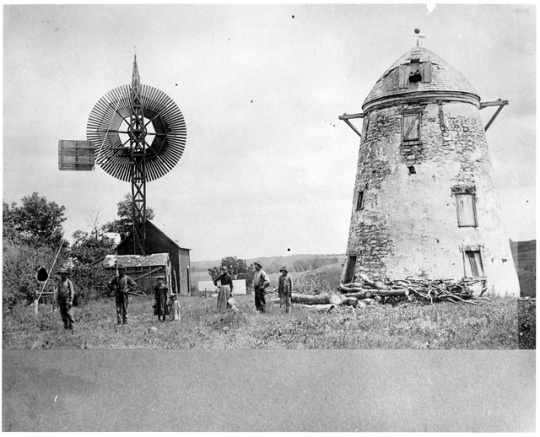
Seppman Mill
Public domain
Holding Location
Articles
More Information
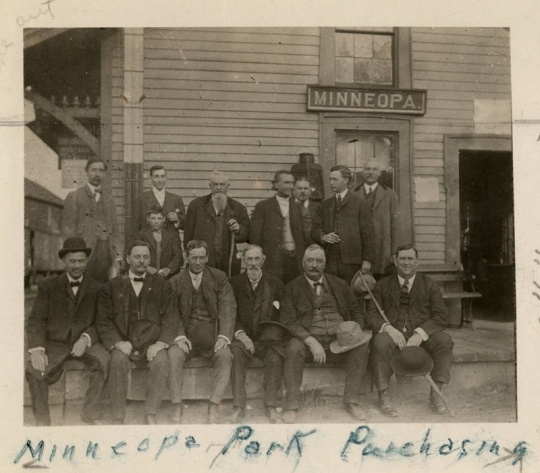
Negotiating the purchase of Minneopa State Park
Negotiating the purchase of Minneopa State Park, October 13, 1905. Photograph by J.P Hodge, Depot Agent, on platform of Minneopa Depot, South Bend, Minnesota. Seated left to right: State Attorney General E. T. Young; State Auditor Samuel G. Iverson; Governor John A. Johnson; General James H. Baker; Orange Little; John C. Wise Jr. of Mankato Review. Standing left to right: Thomas Hughes of local committee; F. G. Cuttle of Railway Construction; Robert L. Williams, in front of Cuttle; Chairman of County Commissioners William. W. Paddock; Dr. J. W. Andrews of local committee; Joseph E. Reynolds of Mankato Free Press; William. L. Johnson, superintendent of Railway Construction Company of Winston Brothers; Charles. N. Andrews of local committee.
Public domain
Holding Location
Articles
More Information
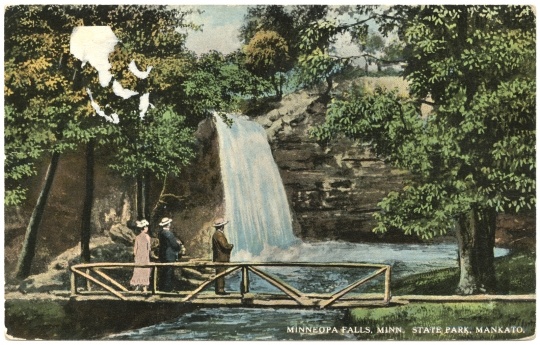
Minneopa Falls postcard
Public domain
Holding Location
Articles
More Information
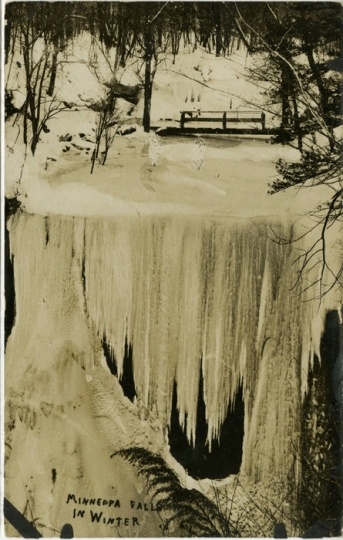
Minneopa Falls in winter
Holding Location
Articles
More Information
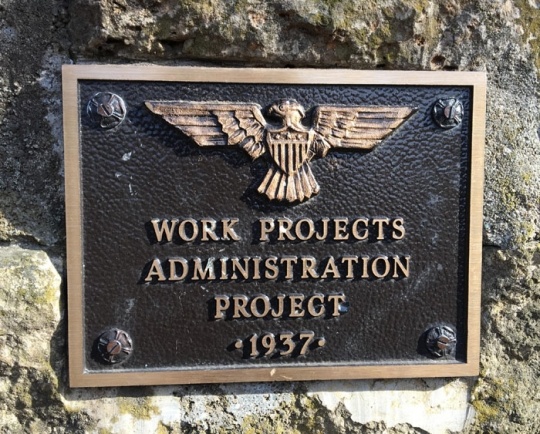
Minneopa State Park WPA plaque
All rights reserved
Holding Location
Articles
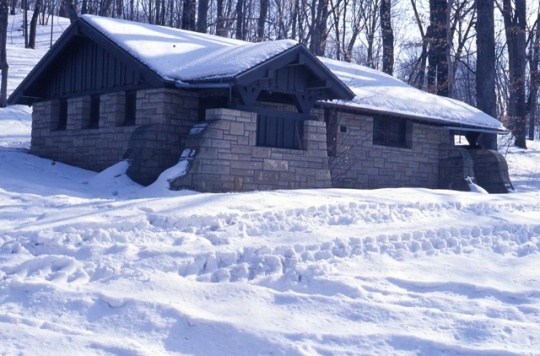
Rustic-style latrine, Minneopa State Park
Holding Location
Articles
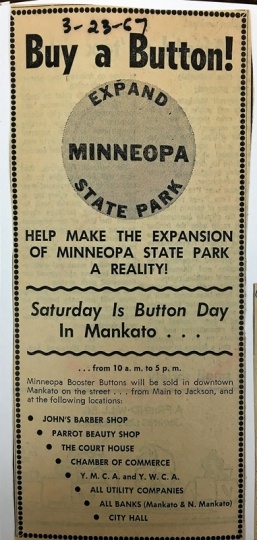
Advertisement for fundraising campaign
Advertisement for fundraising campaign printed in March 23, 1967 edition of the Mankato Free Press. The campaign raised money that was used along with state and federal funds to purchase almost 800 acres of land to expand Minneopa State Park. Photograph by Karin J. Green, May 10, 2017.
All rights reserved
Holding Location
Articles
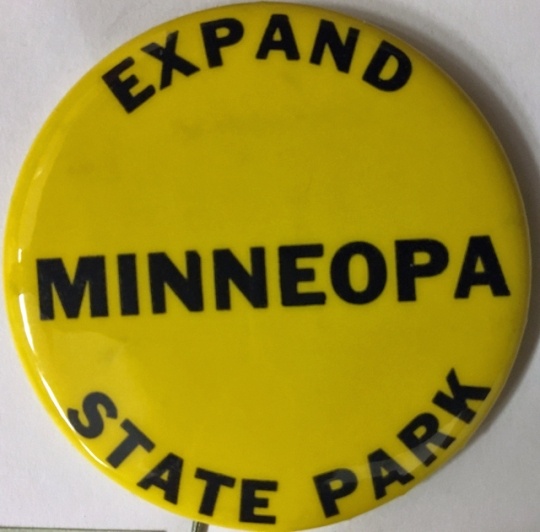
Minneopa State Park button
All rights reserved
Holding Location
Articles
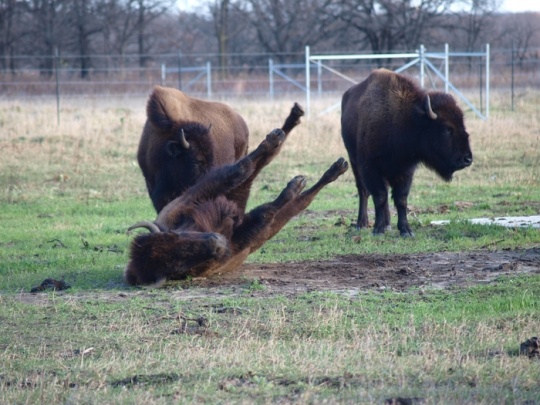
Bison at Minneopa State Park
Holding Location
Articles
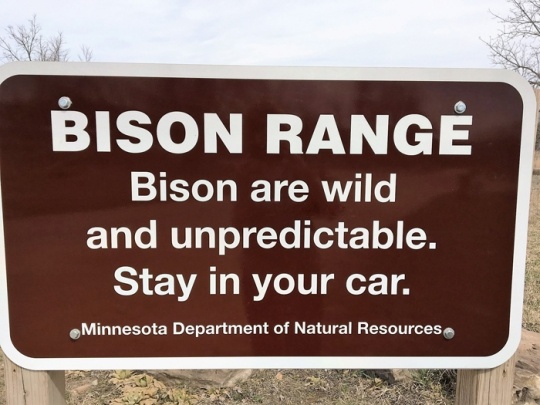
Bison Range sign photograph
All rights reserved
Holding Location
Articles
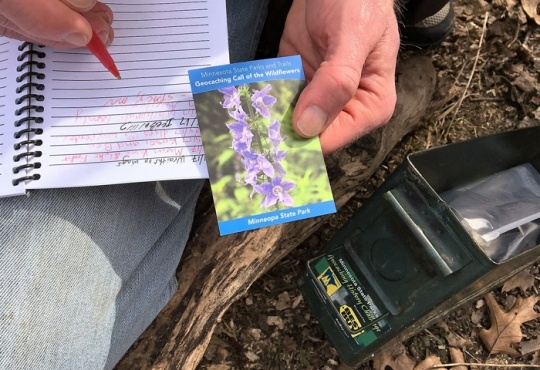
Geocaching History Challenge
All rights reserved
Holding Location
Articles
Related Articles
Turning Point
In 1967, the Mankato community creates the ACT Minneopa Expansion Subcommittee with the goal of adding 800 acres to the state park, preventing its reclassification as a local park. They work with the Minnesota state government and the federal government for approval and matching dollars. In addition, they create the “Expand the Park” yellow-button fundraising campaign.
Chronology
1700
1700s
1851
1853
1862
1870
1876
1903
1905
1937
1967
1971
1989
1998
2015
Bibliography
“450-acres Expansion of Minneopa State Park Finalized.” Mankato Free Press, December 31, 1968.
“92,205 OK’d for Minneopa State Park.” Mankato Free Press, December 20, 1968.
Blue Earth County Historical Society. Hanging folders on Minneopa State Park, divided by decades. Mankato, MN.
“Expand the Park” scrapbook
Manuscript Collection, Blue Earth County Historical Society, Mankato
Description: Lloyd Vollmer, chairman of the ACT Minneopa expansion committee, kept a scrapbook of newspaper articles and other related papers from the 1967–1972 Expand the Park campaign. It includes yellow Expand the Park button artifacts.
Herbst, Gordon H. Minneinneopa: 150 Year History; Minneopa State Park. Waseca, MN: Quality Print, 2007.
Hughes, Thomas. History of Minneopa State Park. St. Paul: Minnesota Department of Conservation, Division of Forestry, 1932.
Journal of the House of the Thirty-fourth Session of the Legislature of the State of Minnesota. St. Paul: McGill-Warmer, State Printers, 1905.
Meyer, Roy W. Everyone’s Country Estate. A History of Minnesota’s State Parks. St. Paul: Minnesota Historical Society Press, 1991.
——— . “Forestville: The Making of a State Park.” Minnesota History 44, no. 3 (Fall 1974): 82–95. http://collections.mnhs.org/mnhistorymagazine/articles/44/v44i03p082-095.pdf
Minneopa State Park WPA/Rustic Style Historic Resources. Minneopa State Park. National Register of Historic Places Nomination File, State Historic Preservation Office, Minnesota Historical Society, St. Paul.
http://www.mnhs.org/preserve/nrhp/nomination/89001663.pdf
“Minneopa Visited by 45,000 in 1935.” Mankato Free Press, January 14, 1936.
Minnesota Department of Natural Resources. “Minneopa Falls: A Changing Cascade.” Interpretative Services, 2014.
Description: an interpretative sign at Minneopa Falls, Minneopa State Park.
Minnesota Department of Natural Resources. “Rare Bison Herd Released.” News release, September 25, 2015.
http://news.dnr.state.mn.us/2015/09/25/rare-bison-herd-released-into-minneopa-state-park/
Minnesota Department of Natural Resources. “Minnesota Bison Conservation Herd Reintroduction. Minneopa State Park.”
http://www.dnr.state.mn.us/state_parks/minneopa/bison.html
Minnesota State Board of Immigration. Minnesota, the Empire State of the New North-west: The Commercial, Manufacturing and Geographical Centre of the American Continent. St. Paul: H.M. Smyth & Company, Printers, 1878.
Seppman Mill. National Register of Historic Places Nomination File, State Historic Preservation Office, Minnesota Historical Society, St. Paul.
http://www.mnhs.org/preserve/nrhp/nomination/71000435.pdf
Tilden, Freeman. The State Parks Their Meaning in American Life. NY: Alfred P. Knopf, 1962.
https://archive.org/details/stateparkstheirm006470mbp
Related Resources
Primary
Leavenworth, Lucy, and Wilder Morris, eds. Old Rail Fence Corners. Frontier Tales Told by Minnesota Pioneers. St. Paul: Minnesota Historical Society, 1914. Reprint 1976.
Mankato Record
Description: Issues in September and October 1876 provide updates on the James-Younger gang escape route and sightings in the Minneopa and Mankato areas. Dates include September 16, 23, 26, and 30 as well as October 3, 7, and 10 (all 1876).
Powell, John Walker. “A Summer in the Big Woods. Boyhood Reminiscences.” Minnesota History 35, no. 2 (June 1956): 77–86.
http://collections.mnhs.org/mnhistorymagazine/articles/35/v35i02p077-086.pdf
Secondary
Hughes, Thomas. Illustrator, A. Anderson. Indian Chiefs of Southern Minnesota: Containing Sketches of the Prominent chieftains of the Dakota and Winnebago tribes from 1825 to 1865. Mankato, Minnesota: 1927.
Goodman, Nancy and Robert. Paddlewheels on the Upper Mississippi, 1823–1854: How Steamboats Promoted Commerce & Settlement in the West. Stillwater, MN: University of Minnesota Printing Services, 2003.
Niskanen, Chris. Prairie Lake Forest Minnesota's State Parks. St. Paul: Minnesota Historical Society Press, 2010.
Olensius, Richard. Minnesota Travel Companion. Wayzata, MN: Bluestem Productions, 1982.
Schrader, Julie Hiller. The Heritage of Blue Earth County. Dallas, TX: Curtis Media Corporation, 1990.
Swanson, Evadene Burris. “The Use and Conservation of Minnesota Wildlife 1850–1900.” PhD thesis, University of Minnesota, June 1940.
https://www.leg.state.mn.us/docs/2007/other/070554.pdf
Web
Minnesota Department of Natural Resources. Birds of Minneopa State Park Checklist.
http://files.dnr.state.mn.us/destinations/state_parks/minneopa/bird_checklist.pdf
Minnesota Department of Natural Resources. Minneopa State Park All Season Map.
http://files.dnr.state.mn.us/maps/state_parks/spk00235.pdf
Minnesota Department of Natural Resources. Minneopa State Park Snapshot Tour. http://www.dnr.state.mn.us/state_parks/virtual_tour/minneopa/dialup.html
Minnesota Department of Natural Resources. Minneopa State Park Virtual Tour. http://files.dnr.state.mn.us/destinations/state_parks/virtual_tours/minneopa/minneopa.html















